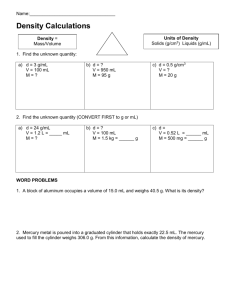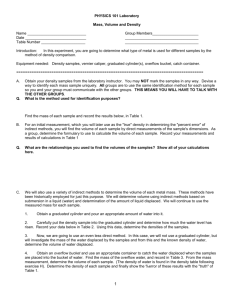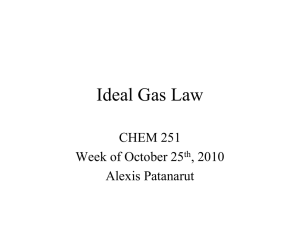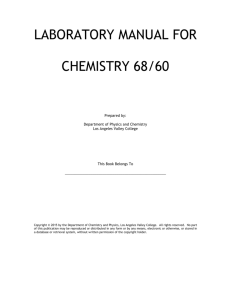Density determination of a metal cylinder Density (d or ρ) is defined
advertisement
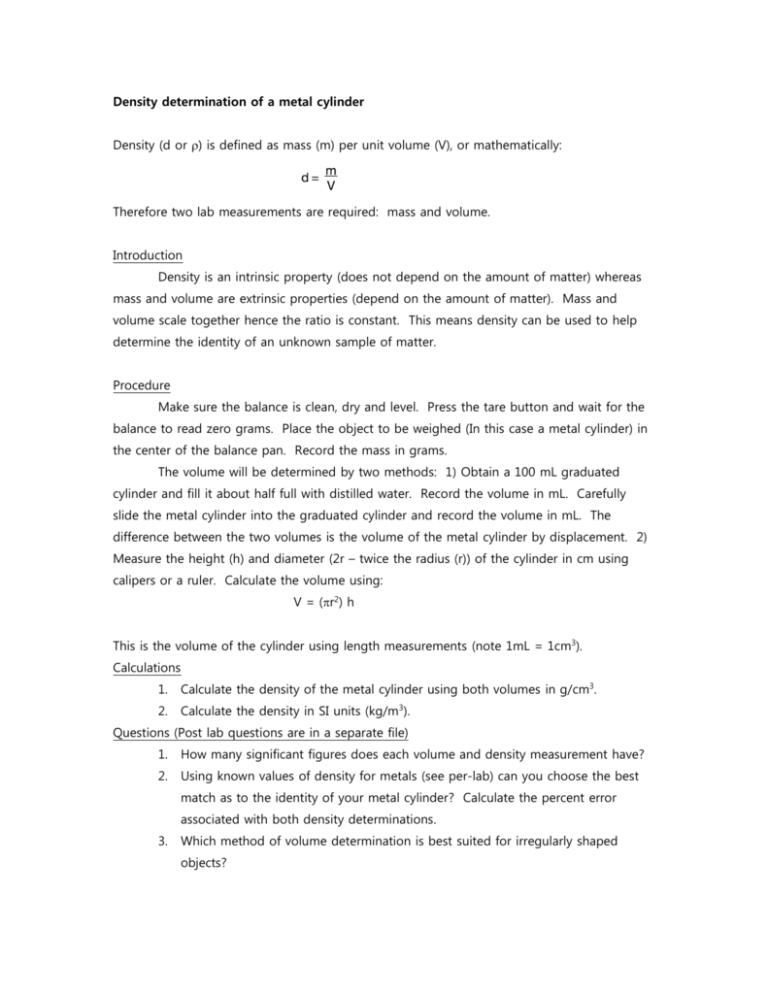
Density determination of a metal cylinder Density (d or ) is defined as mass (m) per unit volume (V), or mathematically: Therefore two lab measurements are required: mass and volume. Introduction Density is an intrinsic property (does not depend on the amount of matter) whereas mass and volume are extrinsic properties (depend on the amount of matter). Mass and volume scale together hence the ratio is constant. This means density can be used to help determine the identity of an unknown sample of matter. Procedure Make sure the balance is clean, dry and level. Press the tare button and wait for the balance to read zero grams. Place the object to be weighed (In this case a metal cylinder) in the center of the balance pan. Record the mass in grams. The volume will be determined by two methods: 1) Obtain a 100 mL graduated cylinder and fill it about half full with distilled water. Record the volume in mL. Carefully slide the metal cylinder into the graduated cylinder and record the volume in mL. The difference between the two volumes is the volume of the metal cylinder by displacement. 2) Measure the height (h) and diameter (2r – twice the radius (r)) of the cylinder in cm using calipers or a ruler. Calculate the volume using: V = (r2) h This is the volume of the cylinder using length measurements (note 1mL = 1cm3). Calculations 1. Calculate the density of the metal cylinder using both volumes in g/cm3. 2. Calculate the density in SI units (kg/m3). Questions (Post lab questions are in a separate file) 1. How many significant figures does each volume and density measurement have? 2. Using known values of density for metals (see per-lab) can you choose the best match as to the identity of your metal cylinder? Calculate the percent error associated with both density determinations. 3. Which method of volume determination is best suited for irregularly shaped objects? Prelab Questions 1. What two quantities are needed to determine density? How is density calculated? 2. An intensive property does not depend on the amount of material. Density is an example. A material has the same density whether it is a small or large sample. An extensive property depends on the amount of material. Mass of a small sample is smaller than the mass of a large sample. Classify the following as intensive or extensive properties: Color ___________________________________ Melting point ____________________________ Energy content _________________________ (Think calories in food) 3. A metal block has dimensions of 1.56 cm by 2.38 cm by 4.67 cm. The block has a mass of 125.67 g. Calculate the density and identify the metal. Density of some common metals Metal Density (g/cm3) Aluminum 2.70 Iron 7.86 Tin 7.29 Copper 8.94 Brass 8.4-8.7 Zinc 7.13 Lead 11.3





